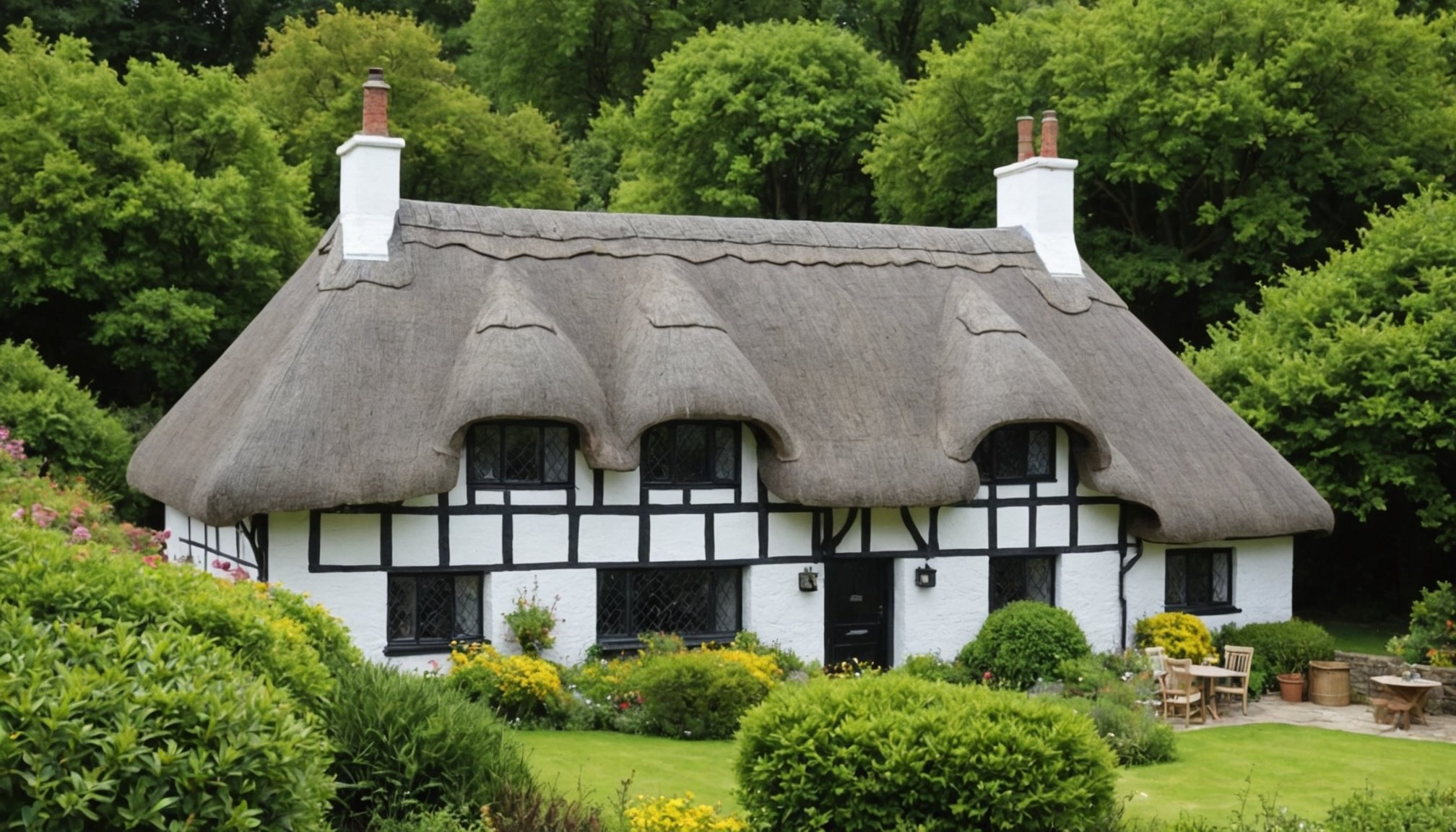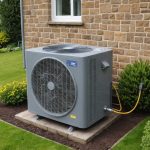Overview of Thatched Roof Homes in Devon
Thatched roofs hold a significant place in the architectural heritage of Devon homes, dating back to periods when these structures were both functional and aesthetic. A thatched roof is more than just a covering; it is an emblem of cultural identity and rural history. The materials primarily used in these roofs, such as straw, water reed, and sedge, are chosen for their durability and insulating properties.
The construction of a thatched roof involves layering these natural materials with precision. This meticulous workmanship offers superior protection against the elements, making it a sustainable choice for housing. Such structural characteristics highlight the skill and knowledge passed down through generations of tradespeople.
Also read : How to Challenge a Property Valuation in Dorset: A Step-by-Step Guide
In Devon, these roofs are not mere relics but a living tradition. They contribute to the unique character of the area, setting it apart from more modernised regions. The presence of thatched roof homes enhances the cultural landscape, drawing interest from historians and tourists alike. This charm and uniqueness touch upon the wider architectural narrative of Devon, where these homes also serve as a testament to local craftsmanship and sustainable building practices.
Types of Insurance for Thatched Roof Homes
Navigating the world of home insurance for thatched roof houses can be daunting. Standard policies often fall short when it comes to these unique homes. Typically, regular home insurance might not adequately cover risks associated with thatched roofs, notably due to the increased fire risk. Thatch materials can be more susceptible to ignition, necessitating additional specialized coverage.
Also to discover : Mastering Property Auctions: The Ultimate Bidding Strategies for Success in Liverpool
Specialized insurance options for thatched roofs exist to address these shortcomings. These policies are designed to provide comprehensive protection, accounting for the unique vulnerabilities of thatched materials. Such coverage tends to include not only fire protection but also damage from severe weather conditions, as thatched roofs can be more prone to wind and hail damage due to their structure.
When choosing insurance types, it is crucial for homeowners to thoroughly assess their coverage options. Examining the policy’s provisions regarding fire, storms, and other weather-related incidences helps ensure that all potential risks are managed. Consulting an insurance provider experienced in thatched roof homes can offer invaluable insights, aiding homeowners in making informed decisions. This specialized approach not only secures the property but also provides peace of mind.
Coverage Requirements for Thatched Roof Insurance
Navigating insurance coverage for thatched roof homes involves understanding specific policy requirements that cater to these unique structures. Key elements often include protection against fire, considering the increased fire risk associated with thatch. Ensuring coverage details align with the structural and geographical specifics of your property is essential.
Crucial documentation is required to secure appropriate insurance. Providers typically ask for an assessment by a certified surveyor, detailing the roof’s condition and maintenance history. This evaluation helps insurers assess risk accurately and tailor the coverage accordingly.
It’s vital to comprehend potential policy exclusions and limitations. Many policies, for example, might exclude coverage for damage caused by pests that are more prevalent in thatched roofs. Additionally, policies could impose higher premiums if your property is in a high-risk area for wildfires or other natural disasters.
Being well-informed about these elements will aid in selecting the right plan. Consider discussing with specialists who can navigate the nuances of thatched roof insurance. Understanding all terms and conditions, including rare clauses, ensures comprehensive protection. With attention to these details, homeowners can enjoy peace of mind, knowing their thatched roofs are safeguarded.
Potential Risks Associated with Thatched Roof Homes
Thatched roof homes, known for their charm and traditional appeal, face unique risks which can affect homeowners. One of the most prominent damage threats is fire. Due to the highly flammable materials, such as straw and reeds, thatched roofs can catch fire easily, requiring homeowners to adopt strict fire safety measures.
Additionally, wildlife, including birds and squirrels, can cause significant issues by pulling apart the thatch for nesting materials or simply causing damage. This highlights a need for vigilance and regular inspections to identify any damage threats early on.
In Devon, geographic factors also contribute to home insurance risks. The proximity to coastal areas can increase moisture levels, which can lead to mold growth and further weaken the thatch structure. Understanding these localised threats is crucial for maintaining appropriate insurance coverage.
Regular maintenance plays a key role in mitigating these risks. Keeping the thatch in good condition, performing routine inspections, and addressing any problems promptly can help manage potential hazards and maintain insurance validity. Insurers often require proof of maintenance before offering coverage, making this an essential practice for any thatched roof homeowner aiming to reduce home insurance risks.
Finding the Right Insurer for Thatched Roof Homes
When finding coverage for thatched roof homes, choosing the right insurance providers is crucial. Many home insurers only offer limited options for thatched properties, so it’s important to focus on those that specialize in this niche. Begin your search by identifying insurers with a proven track record in insuring thatched homes. These local insurers often have tailored policies that address the unique risks associated with thatched roofs, offering more comprehensive protection.
Comparing local insurance offerings is another key step. Consider these criteria: the extent of coverage, exclusions, premiums, and customer service reputation. Insurers specializing in thatched roof properties may also provide benefits like discounts for fire prevention measures or other practical incentives to reduce premium costs.
Community recommendations can be a valuable resource in your search. Engage with fellow thatched roof homeowners, both online and locally, to gather insights. Reviews on forums and discussion sites often reveal insightful experiences others have had with particular insurance providers. This collective knowledge helps inform your decision, ensuring you not only find coverage but also get peace of mind.
Overall, finding an insurer for thatched roof homes requires thorough research and evaluation. Leverage all resources at your disposal—specialized providers, local comparisons, and community reviews—to ensure you select the best coverage for your needs.
Local Regulations and Requirements for Thatched Roof Homes
Navigating the local laws for thatched roof homes can be intricate, especially in areas like Devon, where specific Devon guidelines govern roofing practices. Understanding these requirements ensures you comply with the building codes, which is crucial for obtaining insurance policies.
Local regulations in Devon mandate certain materials and techniques for constructing and maintaining thatched roofs to preserve the region’s architectural heritage. Homeowners must adhere to these guidelines to avoid penalties and ensure their thatched roofs are not only aesthetically pleasing but also structurally safe.
Building codes often include stipulations about the fire retardants used in thatching, the spacing of smoke alarms, and the provision for routine inspections. Compliance with these regulations is not just a safety measure; it is also essential for securing favourable home insurance terms, as insurers look for evidence of adherence to local safety norms.
To simplify this process, it is crucial to connect with local authorities early on. Engaging in consultations and obtaining necessary permits helps in aligning with local expectations and prevents any legal hurdles. This proactive approach is essential for a smooth experience in owning a thatched home in Devon.
Case Studies of Insurance Claims for Thatched Roof Damage
Understanding how insurance claims for thatched roof damage are successfully processed can empower homeowners. Let’s explore how real-life case studies provide valuable insights.
In Devon, one successful claim involved a homeowner who diligently maintained their thatched roof. Regular inspections and timely repairs, documented with photographs and receipts, facilitated a smooth claim process after a windstorm caused significant damage. This example shows the importance of keeping good maintenance records, which can be pivotal when proving the roof’s upkeep and justifying the claim.
Conversely, a challenging scenario highlights what happens when claims are denied. A Devon homeowner faced rejection due to missing evidence of routine maintenance. Insurers emphasized that neglect, such as untreated moss growth leading to leaks, resulted in claim denial. This highlights the importance of proactive roof care and documentation.
Furthermore, real-life examples reveal best practices in maintaining thatched roofs. Homeowners who engage professionals for regular checks often see more success in claims. They not only secure documentation of the roof’s condition but also potentially catch small issues before they become insurance liabilities.
These instances underscore the necessity of combining thorough maintenance practices with detailed records, ultimately enhancing homeowners’ chances for successful insurance claims.
Common Pitfalls for Thatched Roof Homeowners and How to Avoid Them
Owning a home with a thatched roof can be charming and picturesque, but it comes with unique challenges, particularly in securing appropriate insurance. Many homeowners fall into common mistakes that can lead to inadequate coverage. Avoidance starts with understanding the potential pitfalls.
One frequent error homeowners make is underestimating the unique maintenance needs of a thatched roof, which can affect insurance premiums and coverage. Regular inspections and immediate repairs are essential to maintain coverage. Another prevalent issue is not fully disclosing the home’s characteristics to insurers, which might result in denied claims.
Communication with your insurer is crucial. Clear, ongoing dialogue ensures that the insurer fully understands the specific requirements of insuring thatched roofs. Ask detailed questions about what is covered, especially concerning fire hazards and restoration costs, to avoid any unpleasant surprises.
Additionally, to effectively avert these insurance pitfalls, it’s wise to seek insurance providers that specialize in such covers. They often offer specialized advice and packages designed for these unique roofs. Establishing a proactive relationship with your insurer and addressing roof conditions and policies upfront can save homeowners from considerable distress and financial burden.
Maintenance Tips for Thatched Roof Homes to Ensure Insurance Validity
Preserving the insurance validity of a thatched roof home requires diligent roof maintenance. To maintain your coverage, it is crucial to engage in regular upkeep and home inspections.
Begin by scheduling periodic inspections of your roof. These evaluations, preferably conducted by professionals, ensure that any potential issues are addressed before they escalate. Catching problems early not only safeguards the structure but also keeps your insurance valid. An inspector will check for damage caused by weather, rodents, or wear and tear, providing a comprehensive assessment of your roof’s condition.
Owners may also be tempted by the allure of DIY maintenance. Although manageable in some cases, like removing leaves, it’s imperative to know your limits. For more complex tasks, such as addressing moisture buildup or replacing sections of thatch, professional maintenance is essential. This approach guarantees that all work meets recommended standards, maintaining both safety and coverage compliance.
Incorporating these practices into a routine supports the longevity of the roof and sustains insurance validity, ensuring peace of mind. Keep in mind that different insurers have varying requirements, so consulting your policy for specific guidelines on maintenance can prevent any unforeseen lapses in coverage.











